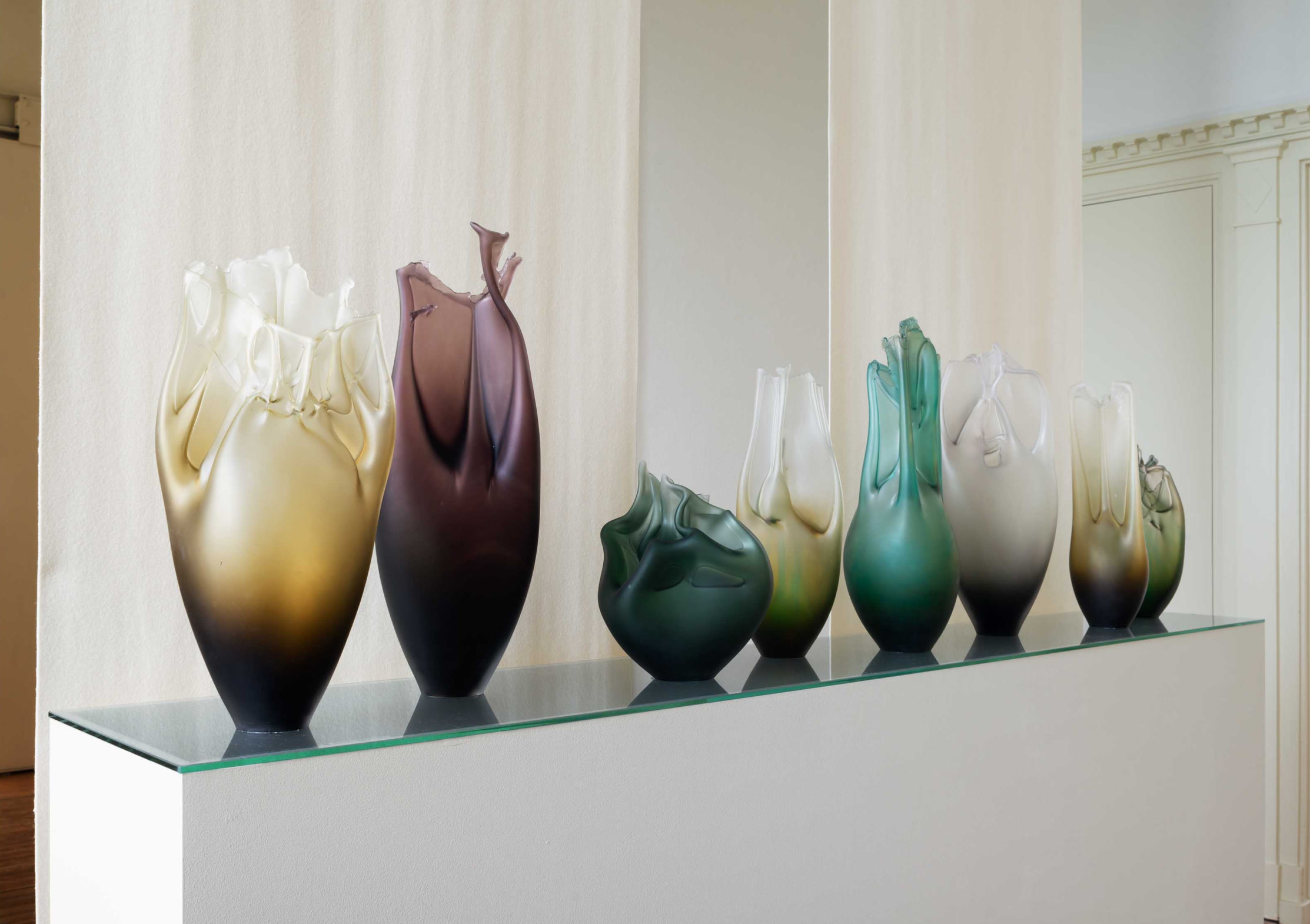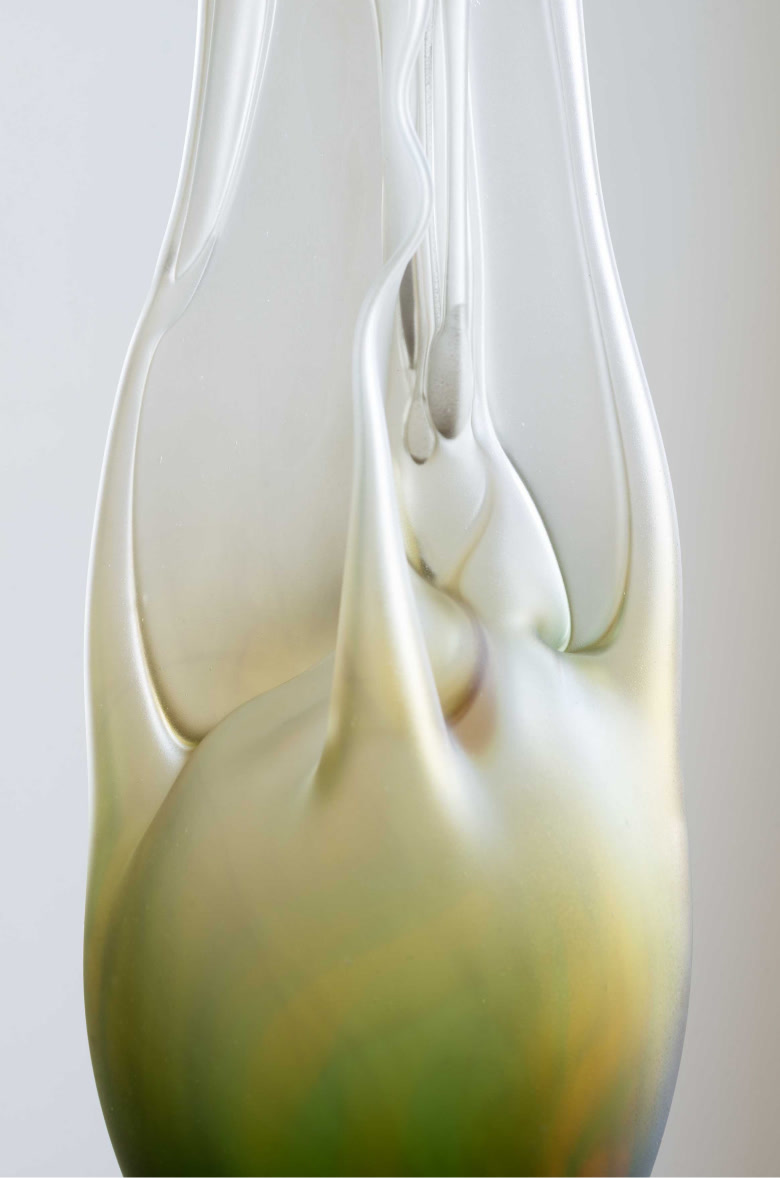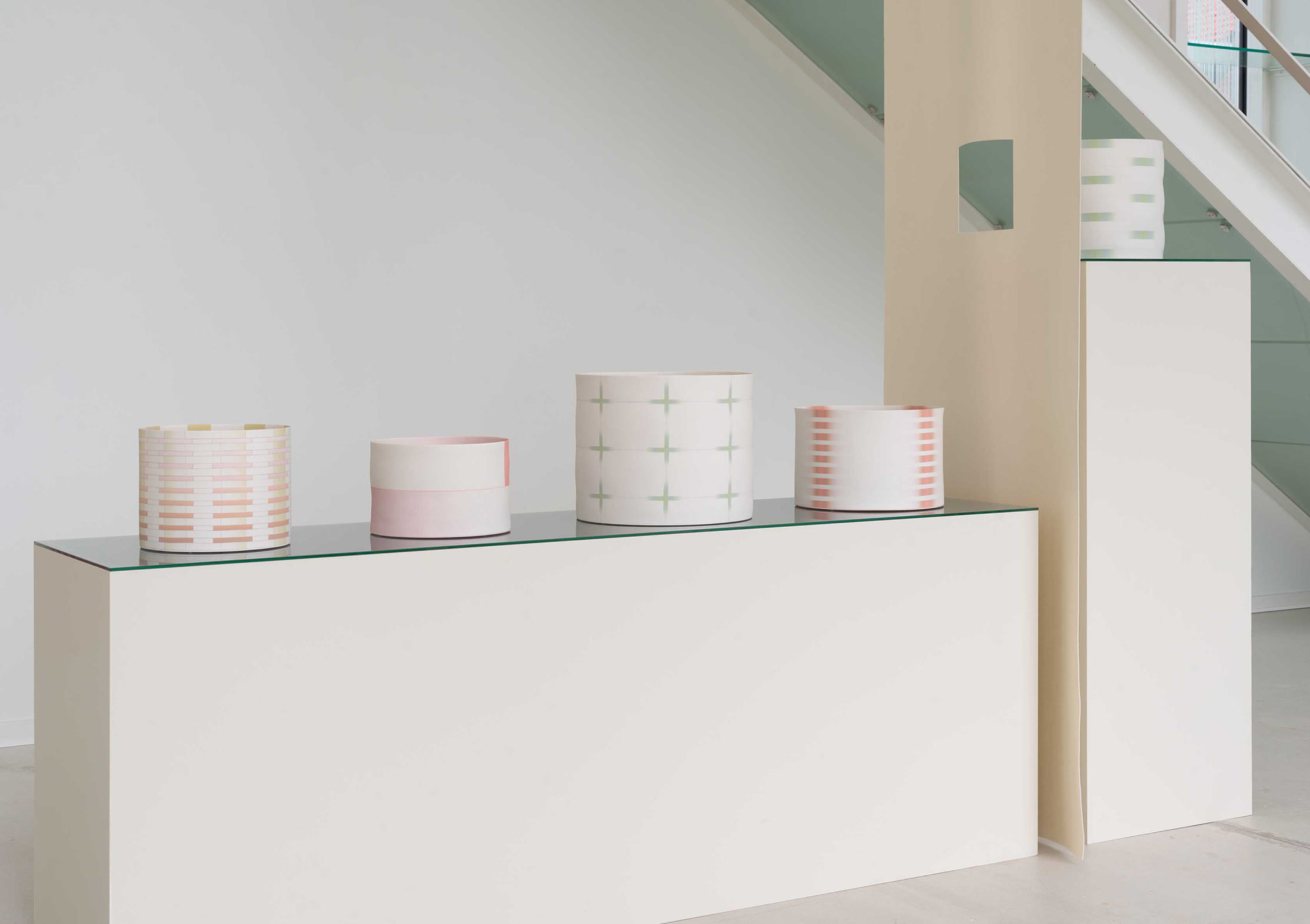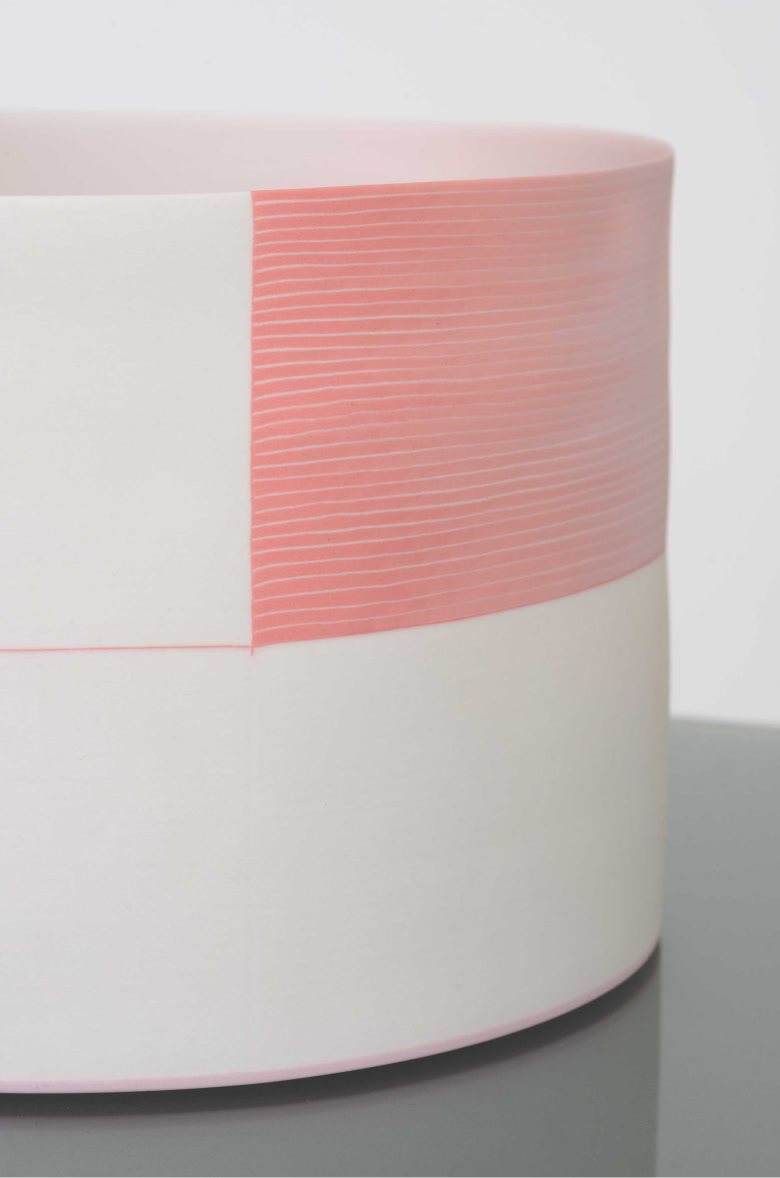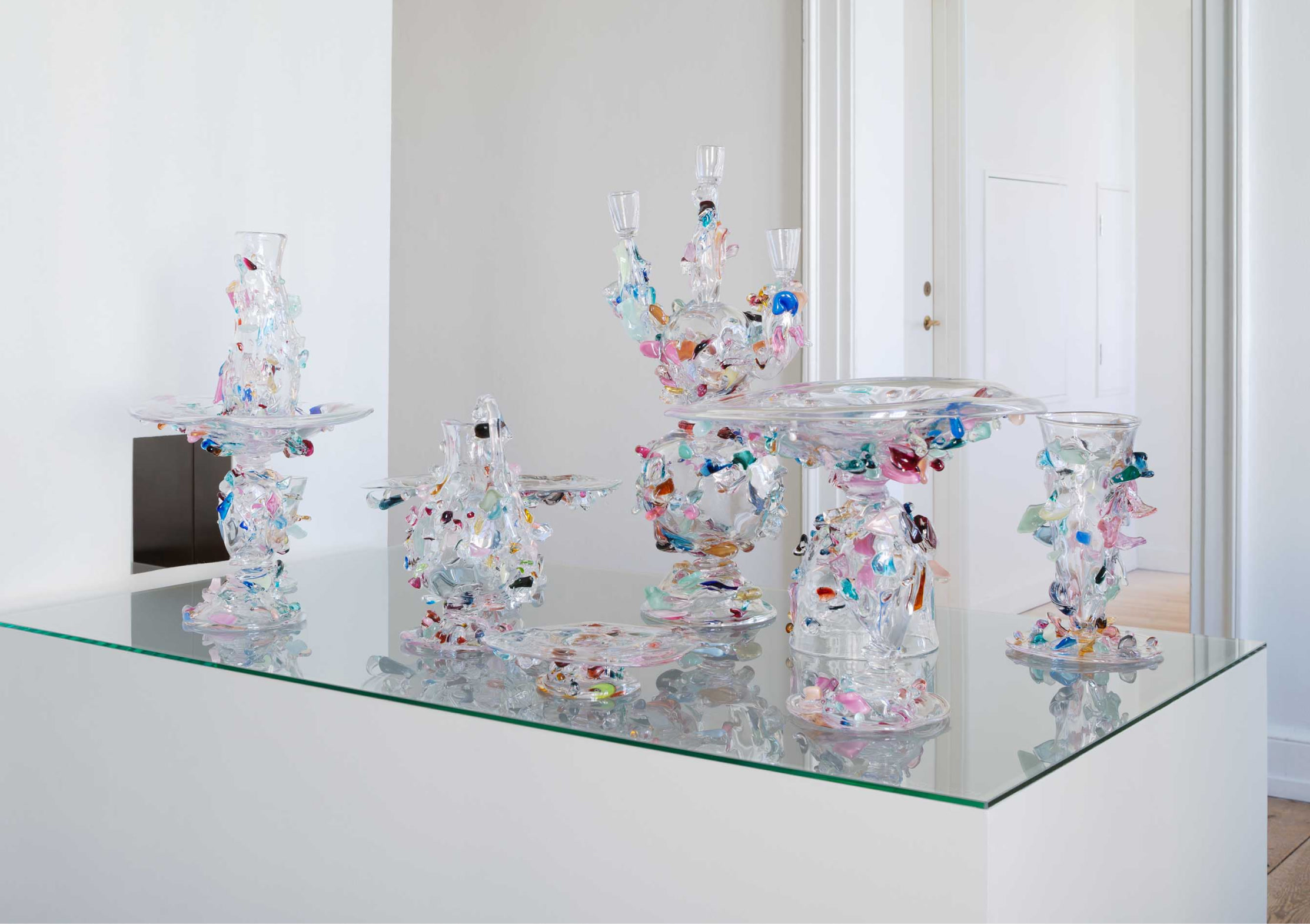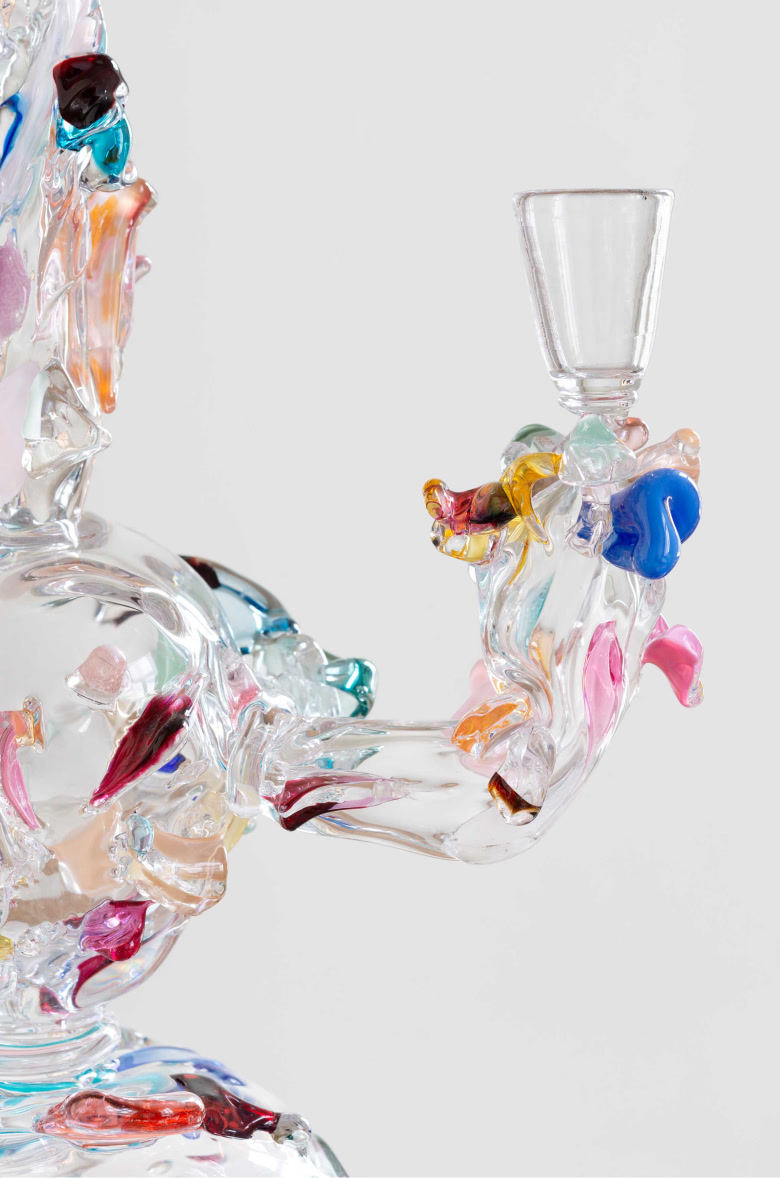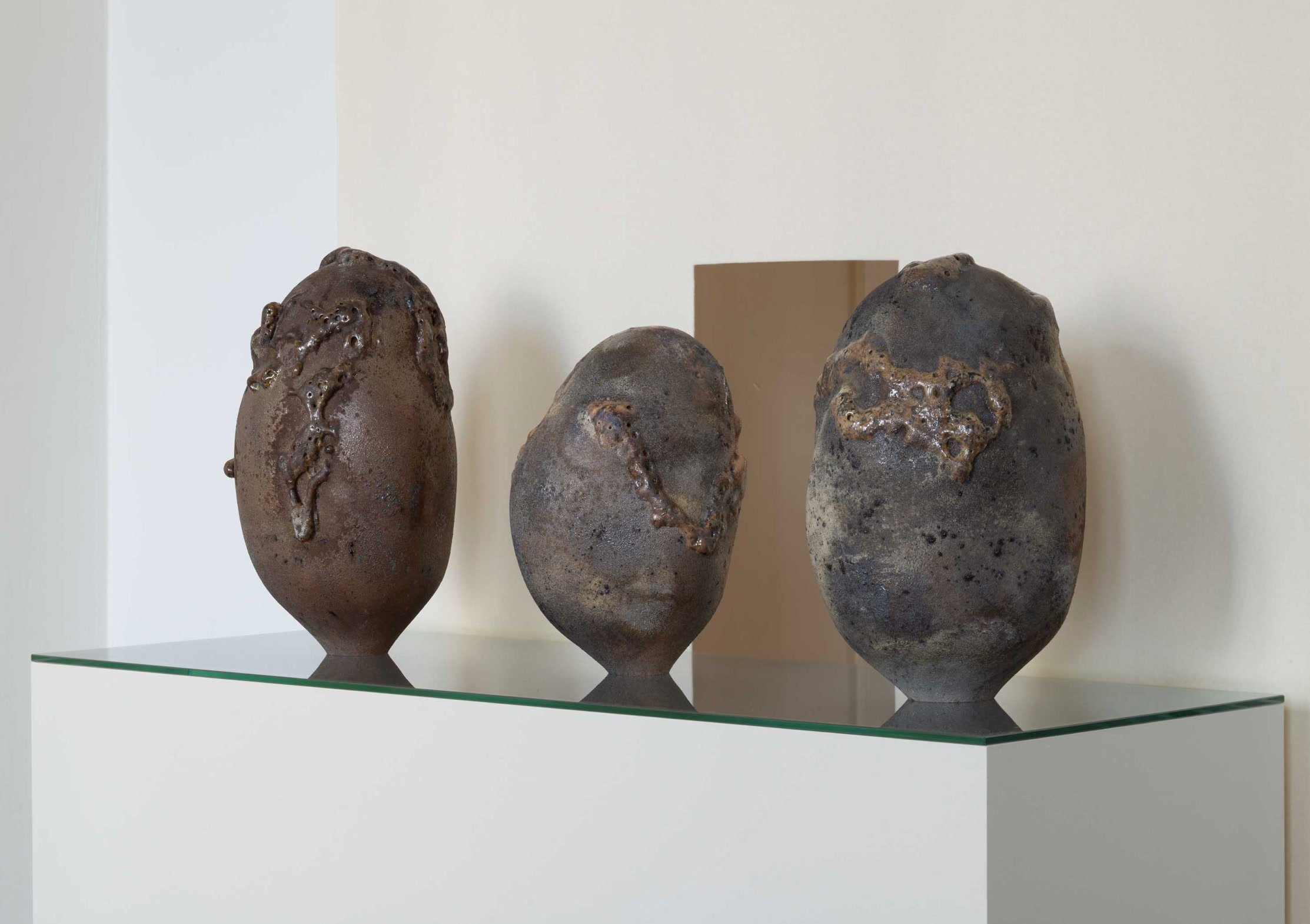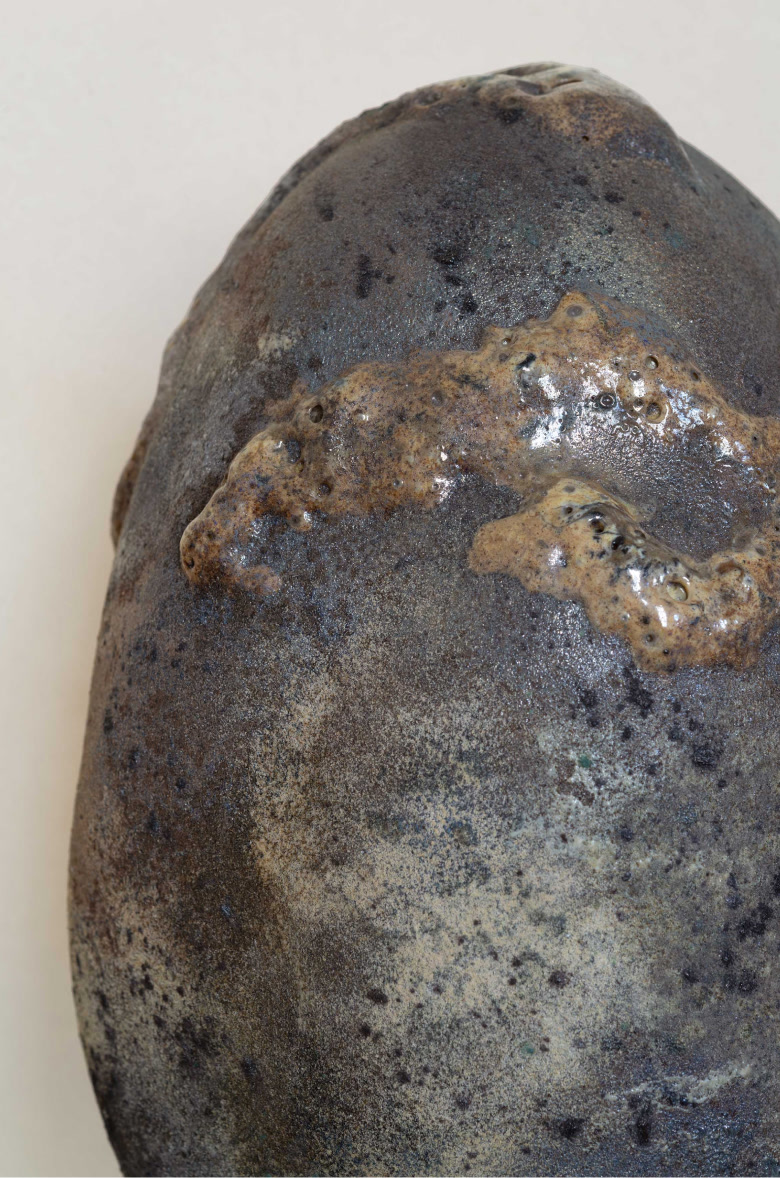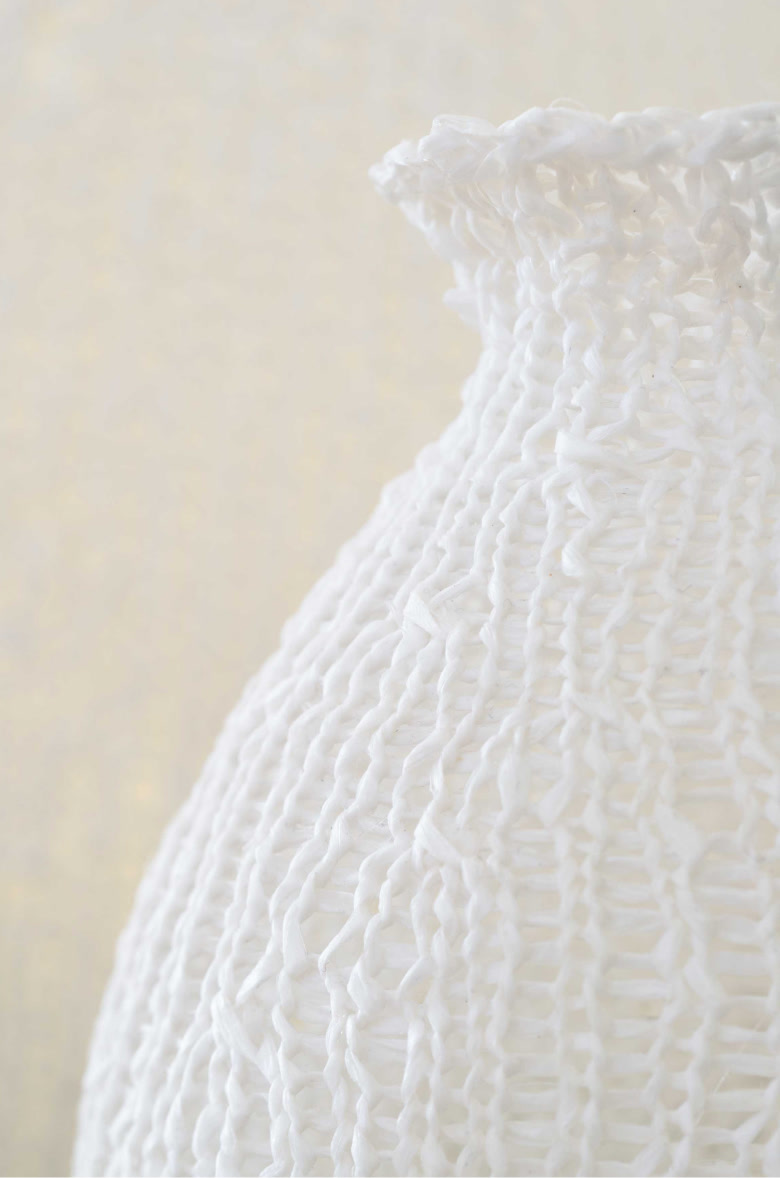TERRAIN #0125, TERRAIN #0225, TERRAIN #0325
Glass, colour pigment, black quartz, copper oxide, granite, silt and ash
H: 310 mm, W: 220 mm
H: 270 mm, W: 190 mm
H: 340 mm, W: 200 mm
The glass grows out of a deep and constant fascination with nature’s infinite complexity and beauty – a symphony of forms, structures and rhythms that Morten Klitgaard seeks to recreate and interpret. In a time when many feel increasingly separated from nature and its primordial power, he feels a pressing need to enhance our connectedness with it. His goal is to visualize the contrasting patterns that arise when nature’s fluid organic shapes meet human-made lines and structures.
Klitgaard’s medium is glass, a material that in its hot, inflated state becomes malleable and delicate, alive and pliable. He uses small, carefully selected natural objects as stamps from wild nature to apply textures and patterns to the glass. In this way, he achieves poetic harmony between natural and cultivated, between soft and firm, between what is shaped and what retains its form.














